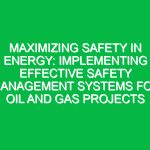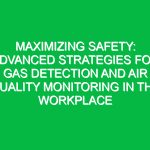In the realm of Health Safety and Environment (HSE), mastering risk assessment and hazard identification is not just a regulatory requirement—it’s a cornerstone for safeguarding the well-being of employees, protecting the environment, and ensuring the sustainable success of any organization. The dynamic nature of workplace environments, especially in industries such as manufacturing, construction, and energy, demands a proactive approach to identifying potential hazards and assessing risks. This article delves into essential strategies for enhancing HSE performance through effective risk assessment and hazard identification, offering insights that are crucial for HSE professionals, managers, and employees committed to fostering a culture of safety.
Understanding the Basics of Risk Assessment and Hazard Identification
Before diving into the strategies, it’s essential to grasp the basics. Risk assessment is the process of evaluating the potential risks that could harm people or the environment in the workplace. It involves identifying the hazards present, analyzing or evaluating the risks associated with those hazards, and determining appropriate ways to eliminate or control the risks. Hazard identification, on the other hand, is the first step in the risk assessment process, focusing on recognizing all potential sources of harm.
Why Are They Crucial for HSE Performance?
Implementing robust risk assessment and hazard identification processes is vital for several reasons. It not only helps in preventing workplace accidents and illnesses but also plays a critical role in ensuring compliance with legal requirements, reducing operational costs associated with accidents, and enhancing the overall safety culture within an organization. In essence, it’s about being prepared and proactive rather than reactive.
Strategies for Mastering Risk Assessment and Hazard Identification
To enhance HSE performance, organizations must adopt a systematic approach to risk assessment and hazard identification. Here are some essential strategies:
1. Foster a Culture of Safety
Creating a safety-first culture is foundational. Encourage open communication and ensure that all employees feel responsible for identifying hazards and reporting unsafe conditions. A culture that prioritizes safety empowers employees to actively participate in the risk assessment process.
2. Conduct Regular and Thorough Inspections
Regular inspections are crucial for identifying new and evolving hazards. These should not be limited to a superficial check but should involve a detailed examination of the workplace, equipment, and work practices.
3. Utilize a Variety of Hazard Identification Techniques
Different situations require different techniques for identifying hazards. Techniques such as job safety analysis (JSA), safety audits, and hazard and operability study (HAZOP) can be employed to uncover potential risks that might not be evident through general observation alone.
4. Engage Employees in the Process
Employees who are directly involved in the work have valuable insights and can identify hazards that may not be immediately obvious to others. Encouraging their participation in hazard identification and risk assessment processes can significantly enhance the effectiveness of your HSE strategy.
5. Provide Comprehensive Training
Training is essential for equipping your team with the knowledge and skills needed to identify hazards and assess risks effectively. Regular training sessions should cover the latest HSE guidelines, risk assessment techniques, and emergency response procedures.
6. Implement a Systematic Approach to Risk Assessment
Adopting a structured framework for risk assessment ensures consistency and comprehensiveness. This should include clear steps for hazard identification, risk analysis, risk evaluation, and the implementation of control measures.
7. Use Technology to Your Advantage
Technological tools can significantly streamline the risk assessment and hazard identification processes. Software solutions can help in organizing data, tracking progress, and ensuring that no potential hazard is overlooked.
8. Review and Update Regularly
The workplace is always changing, and so are the potential hazards. Regular reviews of your risk assessments and hazard identifications are necessary to ensure they remain relevant and effective in managing new and evolving risks.
Overcoming Challenges in Risk Assessment and Hazard Identification
Despite the best efforts, organizations may encounter challenges in effectively implementing risk assessment and hazard identification processes. Common obstacles include a lack of resources, resistance to change, and difficulty in keeping up with regulatory changes. Overcoming these challenges requires strong leadership, continuous improvement efforts, and a commitment to investing in safety as a core organizational value.
Conclusion: The Path to Enhanced HSE Performance
Mastering risk assessment and hazard identification is a journey that requires dedication, continuous learning, and a proactive approach. By fostering a culture of safety, engaging employees, utilizing a variety of techniques, and leveraging technology, organizations can significantly enhance their HSE performance. Remember, the goal is not just to comply with regulations but to create a safe and healthy workplace where every employee can thrive. As we’ve explored, implementing these essential strategies is not just beneficial for enhancing HSE performance; it’s fundamental to the long-term success and sustainability of any organization.
In summary, the key points to remember are:
- Foster a safety-first culture.
- Conduct regular and thorough inspections.
- Utilize a variety of hazard identification techniques.
- Engage employees in the process.
- Provide comprehensive training.
- Implement a systematic approach to risk assessment.
- Use technology to streamline processes.
- Review and update risk assessments regularly.
By embracing these strategies, organizations can navigate the complexities of risk assessment and hazard identification, paving the way for a safer, more resilient future.


